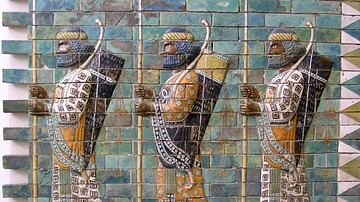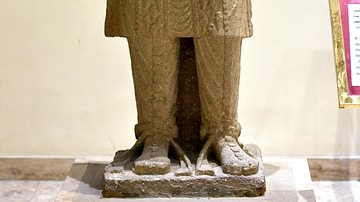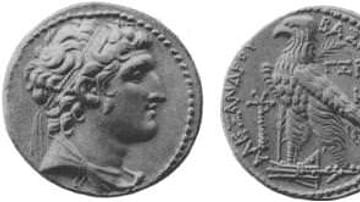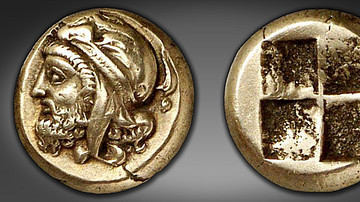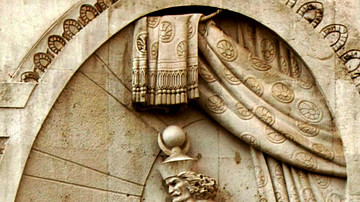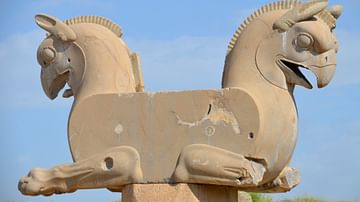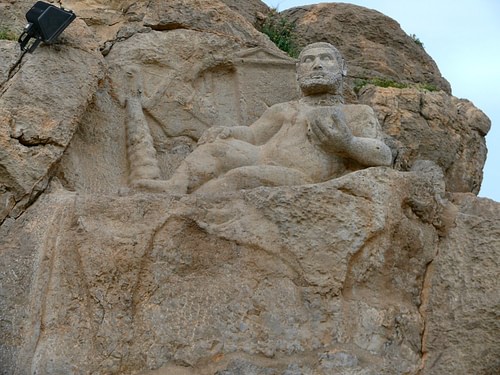
Persis (in Greek, derivated from Persian pars) is the ancient name of the approximate area of modern Fars in Central Iran, as well as a state of the Hellenistic and Imperial periods in this same province. Its name is derived from the Persians who settled in the area in the 7th century BCE, the place being called Anšan before.
Province of Persis
Persis was the Persian homeland, a land of river basins and plateaus which stretched forth from the Zagros Mountains. Its heart roughly corresponded to modern Fars, consisting of river-drained plains between two ridges of the Zagros Mountains, running horizontal from east to west. This land, composed of basins and valleys, was fertile; agriculture being sustained by a complex web of irrigation ditches.
The north-western plains were characterized by more hills and valleys at a higher altitude and so received more rain than their south-eastern counterpart. In the higher altitudes, temperate forests could be found, including oaks, date palms, and pomegranates.
Here lay Pasargade, the early capital of the Persian Kings of Kings, as well as the equally famous city of Persepolis. Nearer the salt lakes in the north lay Anšan, the ancient seat of Persian power and original home of Cyrus the Great, founder of the Persian Empire. The Mand River separated Anšan from other cities in the east.
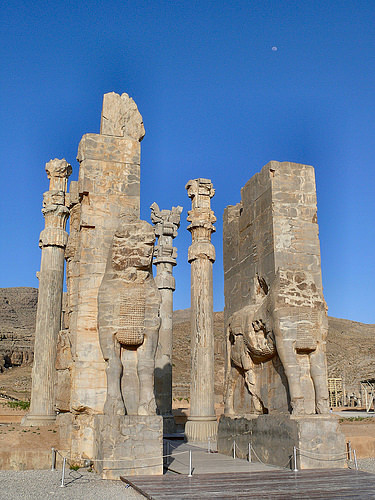
Kingdom of Persis
Persis is also the name given today to a small kingdom of the eponymous area which lasted roughly from 300 BCE to 211/212 CE.
The history of the Kingdom of Persis is surrounded by shadows and contradictory hypotheses but, according to the most recent analysis, this state appeared under Seleucos I's reign (305-281 BCE), when Persis and the whole Middle East were under Seleucid control. Seleucos seems to have formed an alliance with a local Persian dynasty, which gained substantial power in Persis. Persis rulers took the title of frataraka, “keeper of the fire,” equivalent to a sub-satrap title. Their power in Persis was completed by the presence of a Seleucid satrap of Persis, leading to a relationship of coexistence but the precise details of this situation are not fully understood in the modern day.
The four first rulers were Artaxares I (Persian Ardaxshir), Oborzes (Persian Wahabarz), Autophradates I (Persian Vadfradad), and Bagadates (Persian Bagdan). They kept the frataraka title and minted coins, probably keeping good relations with the Seleucids. The exception is the reign of Oborzes (c. 270 - 240 BCE?), who killed 3000 Greek colonists according to Polyaeneus (7.40). Further evidence of turbulent reigns can be found in coin overstrikes, showing that the rulers Autophradates I and Bagadates were not on good terms with each other.
When the Seleucid Antiochos III came to power, he put Alexander, a Greek, at the head of the Persis satrapy, alongside Alexander's brother Molon in Media. Despising the king on account of his youth, Alexander helped his brother Molon to revolt against Antiochos III in 222-220 BCE, along with the Upper Satrapies (Polybius V.40.6 - V.53.12). Defeated, Molon and Alexander killed themselves (Polybius V.53.9), then Antiochos III sent Tychon, the chief secretary of his army, to “take the command of the Persian gulf province”.
Following this revolt, which should have involved the frataraka, the Persis dynasty disappeared from sight until Autophradates II (Persian Vadfradad). From this ruler until the last one, kings all bear the title (malakh) instead of frataraka.
Persis kings seemed to be loyal to the Seleucids until their defeat by the rising Parthians in 141 BCE. The Parthians then kept them as vassals, as they did later with several little kingdoms in Mesopotamia. One of the kings of Persis, Ardashir, greatson of Sassan, revolted against Parthian King Artabanos VI in 211/2 AD and, crushing him, founded the Sassanian empire, virtually ending the kingdom of Persis by merging it with the former Parthian Empire under his rule.
Very little is known of the cultural aspects of the kingdom of Persis. They ruled from Estakhr, where Achaemenid tombs are located. The dynasty shows several indications of Hellenization on their coins and on the scarce representation they left us, alongside reminiscent pictures from Achaemenid art.
Administration aspects were probably similar to those used by the early Sassanids, with a king giving orders to several kyrios (Lords). Ultimately, the legacy of the kingdom of Persis became visible through Sassanid cultural elements even though many important aspects remain unknown.

